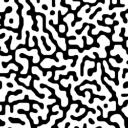Yahoo Answers is shutting down on May 4th, 2021 (Eastern Time) and beginning April 20th, 2021 (Eastern Time) the Yahoo Answers website will be in read-only mode. There will be no changes to other Yahoo properties or services, or your Yahoo account. You can find more information about the Yahoo Answers shutdown and how to download your data on this help page.
Trending News
2 Answers
- husoskiLv 74 years agoFavorite Answer
Assuming they don't intersect, the difference will be an extreme point of:
f(x) = 101x^6 - 404x^2 + 311
f'(x) = 606x^5 - 808x = 202 x(3x^4 - 4)
The real roots of f' are x = 0 and x = ± ⁴√(4/3).
The second derivative is:
f"(x) = 3030x^4 - 808
That's clearly negative at x=0, meaning f(0) is a local maximum, and just as clearly positive when |x| > 1, so x = ± ⁴√(4/3) are local minima.
Since f(x) is symmetrical (only even powers) you only need to look at the positive value x=⁴√(4/3). If f(x) > 0 there, then there can't be any root of f between 0 and that x value (else Rolle's theorem says that f' would be zero somewhere in-between, and we've just shown that x and 0 are the only non-negative roots of f'.)
f(⁴√(4/3)) = 101(4/3)^(3/2) - 404(4/3)^(1/2) + 311
= 101*√(4/3)*[(4/3) - 4] + 311
= 311 - (808/3)√(4/3)
That second term is computationally about 310.999345, so the curves don't touch and that value is positive and equal to the exact closest *vertical* distance.
Finding the closest *geometric* distance between the graphs is a much harder problem.
- JLv 74 years ago
I decided to work it out. I contrived the problem, but had not worked out the answer when I posted.
May as well minimize the squared distance between (X, 101X^6) and (x, 404x^2-311) where X and x are independent. Writing down that squared distance and taking partial derivatives, gives the system of two polynomial equations in the two unknowns x, X:
61206X^11 - 244824X^5*x^2 + 188466X^5 + X - x = 0
-81608X^6*x + 326432x^3 - X - 251287x = 0
Note that the first equation is quadratic in x.
One could use a multivariate Newton, say, once you have an approximate solution.
Or throw it to wolframalpha, see
http://www.wolframalpha.com/input/?i=solve+%7B6120...
You will need to click both "more roots" and "more digits". For some reason wolfram only gave me X.
Ultimately using Maple I get the points
(-1.074570120419334688501768725, 155.4998362505805418102621281), (-1.074570874802836765361492622, 155.4998362497116899085332346)
one on each of the two graphs, and the distance between them as
0.00000075438400242
smaller than husoski's vertical distance which was
0.006549965215881844




